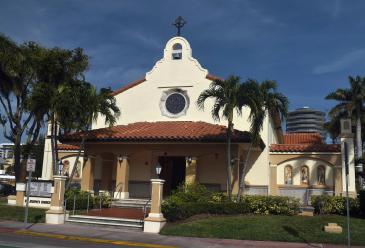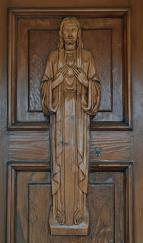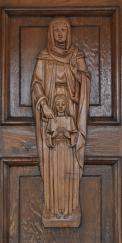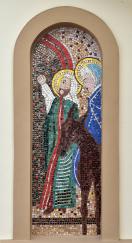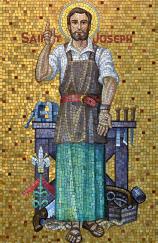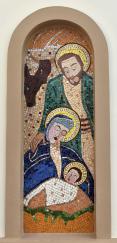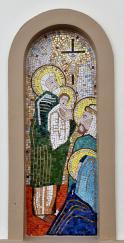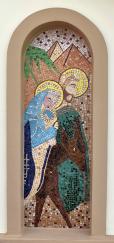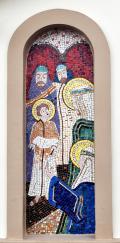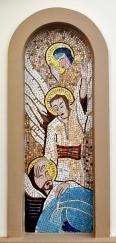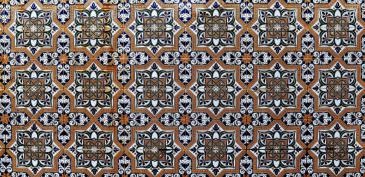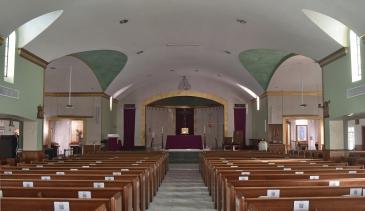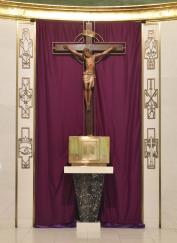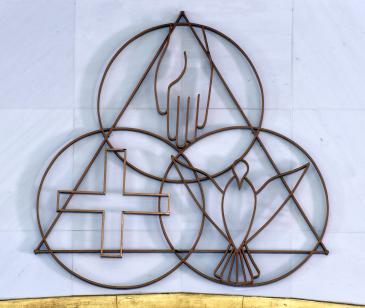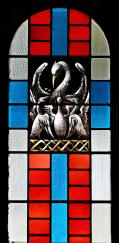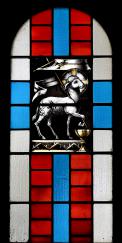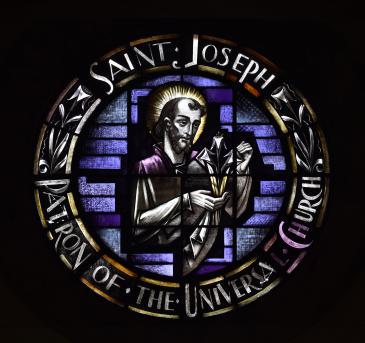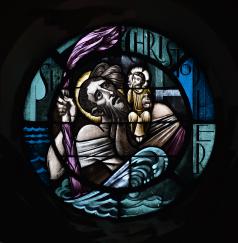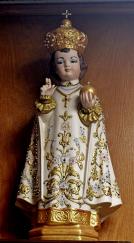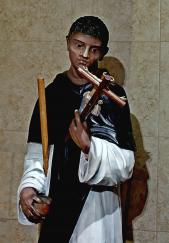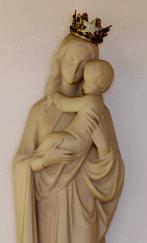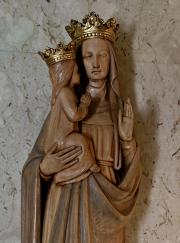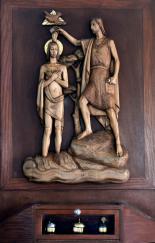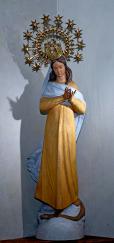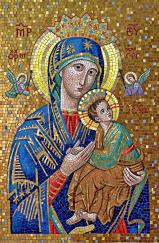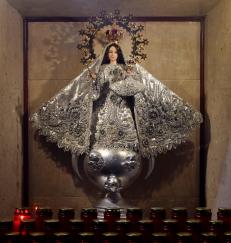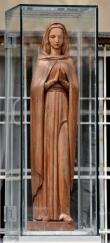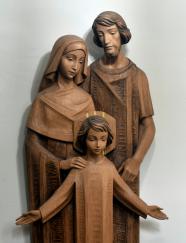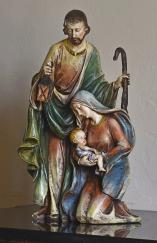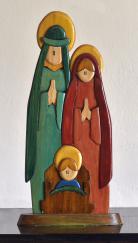By Jim Davis - Florida Catholic
Photography: Jim Davis
MIAMI BEACH | List the local churches named for Mary, and you’ll quickly run out of fingers. List the local churches named for St. Joseph, and you may find it hard to count past one.
Still, Joseph, whose feast day is March 19, has his own prominent place in the salvation story. Like Mary, he was visited by Gabriel. Joseph kept the family safe from a murderous rampage by a king. And he taught and cared for Jesus as his own son – perhaps the most famous foster father in history.
Despite his importance, little is known of Joseph’s own background. The Gospels say he worked as a tekton, the Greek word for a craftsman in wood, stone and metal. Matthew also lists an extensive genealogy to show Joseph as a descendant of King David, thus part of the royal line of Judah.
Joseph was engaged to Mary when he learned she was pregnant. He wanted to break the engagement quietly; but the archangel Gabriel told him in a dream to marry her anyway, for her child was conceived by the Holy Spirit.
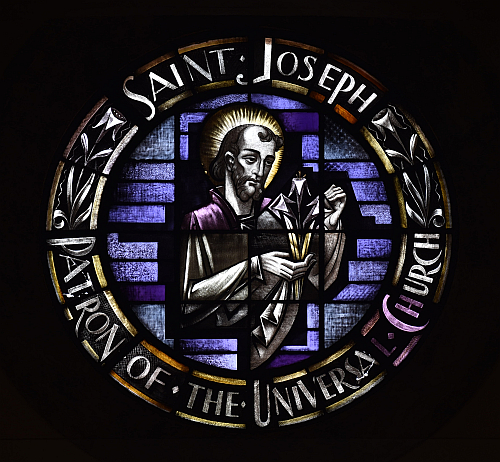
Photographer: Jim Davis | FC
St. Joseph regards a lily in the rose window at his namesake church on Miami Beach. A lily is a traditional symbol of purity.
Joseph then took Mary to Bethlehem for the Roman census, and she bore Jesus there. After Jesus was born, Gabriel appeared in another dream, warning Joseph to flee Bethlehem before King Herod the Great killed all young children there.
The Holy Family stayed in Egypt until they learned Herod had died. Then they moved to Nazareth, where Joseph plied his carpenter trade.
They apparently weren't rich, for when they went to Jerusalem for Passover each year, they brought two doves as a Temple sacrifice. People with more money brought a lamb.
Joseph’s last mention in the Bible was during Passover when the child was 12. Jesus went missing, and Mary and Joseph searched frantically until they found him in the Temple – amazing scholars with his knowledge.
Thereafter, Joseph vanishes from the scriptural narrative. He isn't mentioned during the wedding at Cana, where Mary prompts Jesus to perform his first public miracle. In John 6:42, people call Jesus “the son of Joseph,” but they don’t say whether Joseph was still alive at the time.
Nor does Joseph keep vigil with Jesus during the crucifixion, as do Mary and John. Bible scholars therefore believe Joseph died while Jesus was still a youth.
Some ideas about Joseph have found popularity, although they're not in the Bible. The apocryphal second century Protoevangelium of James says Joseph was an aged widower with children when he married Mary. That might explain why Matthew and Mark mentioned brothers of Jesus.
Another popular notion, from a medieval legend, says Joseph knew that Mary was meant for him because when he met her, his staff blossomed. Many renderings of Joseph accordingly show his staff topped with lilies.
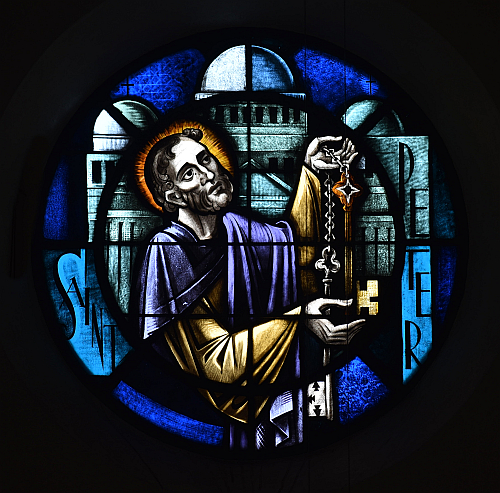
Photographer: Jim Davis | FC
Peter holds the Keys to the Kingdom of Heaven in this window at St. Joseph Church, Miami Beach. Jesus gave him the keys and added, "Upon this rock I will build my church."
Devotions to Joseph have grown steadily over the centuries. Coptic Christians kept a feast for him in the fourth century. Crusaders built a church for him in Nazareth in the 12th century.
Joseph was honored by medieval Franciscans, Carmelites and Dominicans, plus several saints including Bernard, Thomas Aquinas and Teresa of Avila. He then drew the attention of several popes.
In the 15th century, Pope Sixtus IV introduced Joseph’s devotion at Rome. Three centuries later, Pope Pius IX declared St. Joseph Patron of the Universal Church.
In 1956, Pius XII established the feast of St. Joseph the Worker on May 1. Pope Benedict XVI added him in the Eucharist prayers. And Pope Francis declared December 2020 to December 2021 the Year of St. Joseph.
“Saint Joseph reminds us that those who appear hidden or in the shadows can play an incomparable role in the history of salvation,” Francis said in his letter.
Various traditions for St. Joseph have sprung up in many lands. In parts of Europe, people bake small round loaves in his honor. In northern Spain, they visit a shrine for him, followed by an outdoor meal of lamb. In eastern Spain, people light bonfires on St. Joseph’s Day. And in central Europe, they light candles in his honor and have priests bless their gardens and orchards.
San José, the saint’s name in Spanish, is the most common city name in the world, with more than 1,700 namesakes. Joseph is the patron saint of Austria, Belgium, Canada, Peru and Mexico. He's also the patron of craftsmen, carpenters, laborers, travelers, educators and engineers.
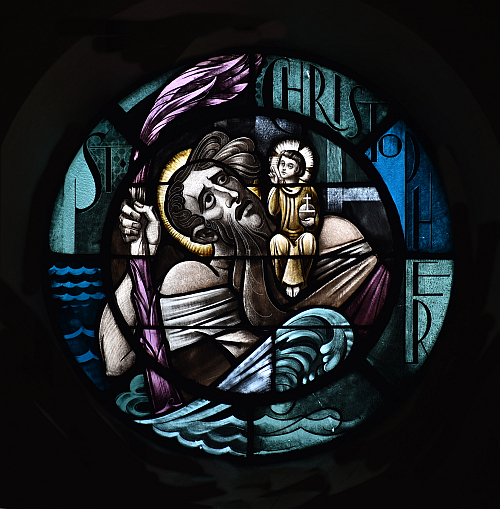
Photographer: Jim Davis | FC
Christopher bears a young Jesus across a river in this window at St. Joseph Church, Miami Beach. The image is based on a legend.
Why the many honors? Catholic leaders cite several reasons. Joseph is upheld as an example of the ideal family man: attentive, protective, hardworking. As modern societies value such qualities less, Catholics uphold them even more.
“Saint Joseph provides a manly model of paternal, human love for our dysfunctional modern world,” in the view of author Dawn Beutner in The Catholic World Report. “He was a father who worshiped God. A father who obeyed God’s laws. A father who was known for being honest and just.”
In South Florida, St. Joseph Church began in 1941 as a mission. It was named for Joseph on recommendation of a parishioner, who said he was liberated from the Dachau concentration camp after praying to that saint.
St. Joseph attained parish status in 1947, then purchased an apartment building to use as a school. The school, operated by the Adrian Dominican Sisters, opened in 1958 with 173 students. Parishioners added a library in 1960. (The school closed in June 2010 and is now a charter school.) The parish also began religious education classes for public school children.
St. Joseph provided the land for Stella Maris, a residence for the elderly, in 1985 (operated by the archdiocese's Catholic Housing Management).
The congregation’s quiet community life was disrupted in 2021 by the collapse of a 12-story oceanfront condo, about two blocks away. Father Juan Sosa, St. Joseph pastor, said 22 parishioners died in the collapse.
As the closest church to the tragedy, St. Joseph became a place of prayer for grieving families and neighbors alike. The church and parking lot served as a hub for journalists, and for search and rescue workers.

